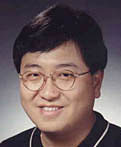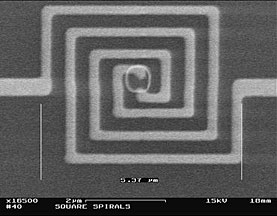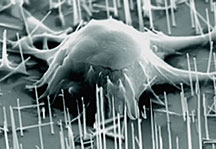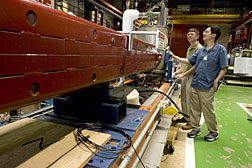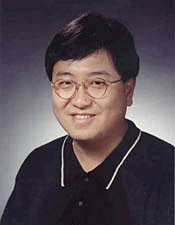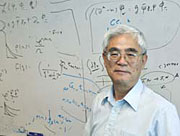| Research
|
|
|||||||||||||||||||||||||||
|
Check out the Office of Science's new Website.
|
Nuclear physicists reach for the starsJefferson Lab's Excited Baryon Analysis Center is helping nuclear physicists make the stuff of stars out of ordinary matter. Probing the properties of this "stuff" could provide key insights for understanding the evolution of real stars in the early universe.
"The research we're doing has consequences, not only in nuclear physics, but also in astrophysics and other fields," says Harry Lee, EBAC leader and joint Jefferson Lab and Argonne National Lab senior scientist. Established in January 2006, EBAC is the first of the Department of Energy Topical Theory Centers. It resides within Jefferson Lab's Theory Center and provides theoretical support to worldwide experiments probing the structure of excited baryons. Baryons, such as protons and neutrons, are building blocks of ordinary matter. However, the baryons inside stars are thought to be more than just protons and neutrons. "In a star, the density and temperature could be very, very high, so the matter there has not only regular protons and neutrons, but also their excited states, what we call the N-star (N*) states," Lee explains. To really understand our universe, he says, it's important to understand all the forms matter can take, including these excited states. One could liken the normal and excited states of a baryon to a vibrating telephone cord. During a phone call, the cord often moves up and down - slowly and evenly. This gently swaying cord is like a regular baryon. Now twang the cord, giving it more energy. The cord now has more ripples in it, and that's like an excited baryon. To find out how the properties of excited baryons differ from their regular counterparts, scientists are using accelerators to produce these particles. For instance, the N* program in Jefferson Lab's Hall B aims to make excited baryons that have never before been seen. One goal of EBAC is to further develop and apply theories to existing data. These theories may help scientists squeeze more information about the properties of the excited baryon from the data, allowing experimentalists to get more information from their data and to design better future experiments. These new theories may serve as tools for eventually tackling one of the most difficult problems in nuclear physics: Linking the description of matter's building blocks to quantum chromodynamics, or QCD, the most fundamental theory yet for describing how these building blocks make up matter. If that can be established, the potential benefit is enormous, according to Lee. "There are many things not understood about the structure of baryons," notes Anthony Thomas, Jefferson Lab's Chief Scientist. "States that we expect have not been seen yet, and others are in the wrong place. Through EBAC, we have the opportunity to make a truly comprehensive analysis of the world's data. This promises new insights into how QCD works."Submitted by DOE's Jefferson Lab |
